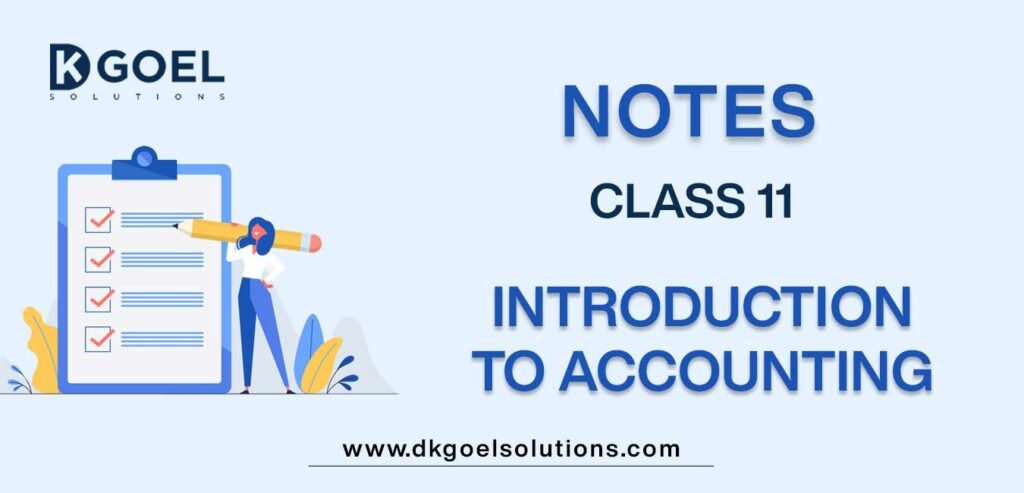Notes for Class 11 Accountancy Chapter 1 Introduction to Accounting
Students can refer to Notes for Class 11 Accountancy Chapter 1 Introduction to Accounting given below. These notes have been prepared keeping into consideration the latest syllabus and examination guidelines issued by CBSE and NCERT. Class 11 Chapter 1 Introduction to Accounting Notes is important to understand the topic and solve all questions given in DK Goel Class 11 Textbook
• Introduction
• Book keeping
• Meaning of accounting
• Difference between book keeping and accountancy
• Economic events
• Changing role of accountancy
• Process of accounting
• Users of financial statements
• Branches of accounting
• Objectives of accounting
• Basic accounting terms
“There’s no business like show business, but there are several businesses like accounting.”
Introduction:
Accounting has greater discipline than book keeping. It includes conceptual knowledge of the subject and applications also.
BOOK KEEPING:-It involves journal, ledger, cash book and other subsidiary books, it cannot disclose the results of Business.
Meaning of Accounting:-It is process of identifying, measuring, recording and communicating the financial information.
Difference between Bookkeeping and accountancy:
Book keeping does not show the net result and accountancy shows net result of the business.
Economic Events:-
All events which can be measured in monetary Terms are known as Economic events. (Salary paid to employees, Goods purchased from creditors, cash withdrew from bank)
CHANGING ROLE OF ACCOUNTANCY
- 1. As a language to communicate information an enterprises.
- 2. To provide valuable information for judging management ability.
- 3. To provide quantitative information this is useful in economic decision.
Process of accounting
1. Identification of the economic events. (Selection of important event)
2. Classification of the business transaction (Assets, liability, expenses, income).
3. Measurement in terms (Monetary value transaction.),
4. Recording of business transactions (As per accounting principal)
5. Summarizing the business transaction (Journal, ledger, trial balance and Balance sheet.)
6. Analysis and interpreting the business transactions. (Various reports, ratio etc.)
7. Communication (provide information to internal and external users.)
Users of financial statements:
1. Internal users :- (Owners, shareholders, investors, creditors, employees, customers, management.)
2. External users: – (Regulatory agencies, labor union, stock exchange, public and others)
BRANCHES OF ACCOUNTING

